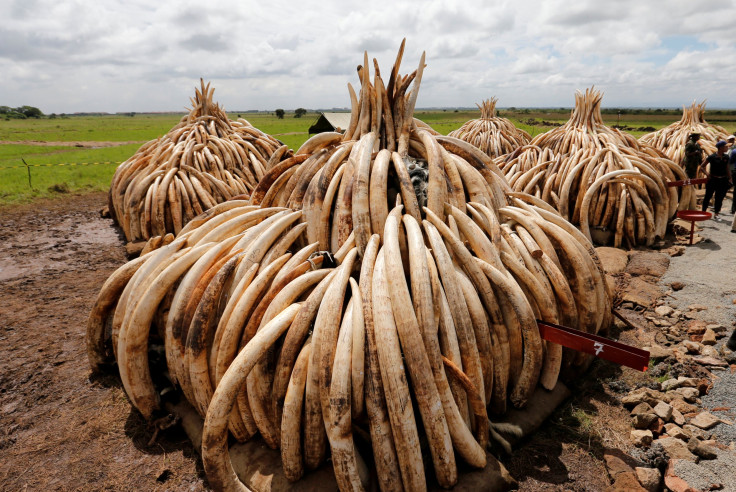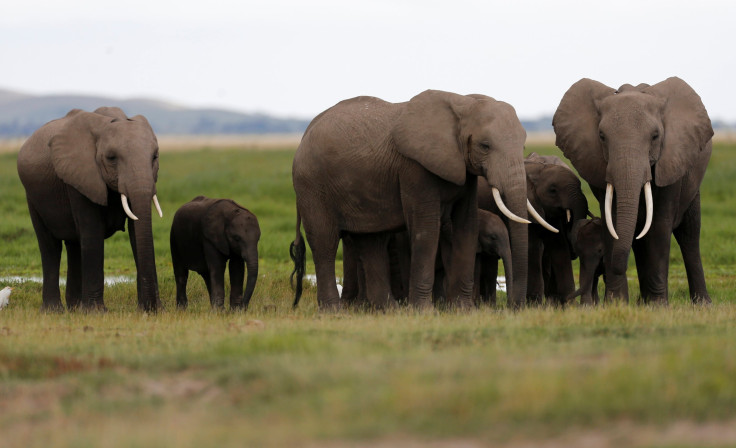Elephant Poaching: Most Ivory Being Sold Came From Recently Killed Tuskers, Research Shows

An agreement banning the international trade in elephant ivory came into effect almost 27 years ago, in January 1990, and the United States enacted a similar ban in June 2016. However, an estimated 95 elephants are killed in Africa every day for their tusks to feed the demand for ivory, which now mainly comes from Asia.
The ban on ivory trade makes exceptions for “old” ivory (procured legally before 1976 at the time the ban came into force and for the purpose of this story, understood to be ivory older than 10 years), but it is difficult to tell how old a given specimen is, and that lack of clarity can often lead to abuse of the law. However, a research paper published Monday shows a very large proportion of seized ivory — meant to be sold — between 2002 and 2014 came from animals that had died less than three years before the seizure.
The study used carbon dating on 231 specimens of ivory that were seized by authorities in various African countries in 14 seizures, each of which was over 0.5 tons. It found that about 90 percent of the specimens had been taken from elephants that had died less than three years before the seizures were made.
“This indicates that the assumption of recent elephant death for mortality estimates of African elephants is correct: Very little ‘old’ ivory is included in large ivory shipments from Africa,” the study said.
Thule Cerling, lead author of the study and professor of geology and geophysics at University of Utah, said in a statement: “If all of the seizures are really recent, within the past two to three years, we can use that to determine the overall killing rate of elephants is in Africa.”
Samuel Wasser from the University of Washington also contributed to the study by providing analysis of genetic data of the ivory to determine its geographic origin. It showed that specimens originating from East Africa had the highest number that had spent less than 12 months in transit, i.e., from the animal being killed to the ivory being seized. Ivory from the Cameroon-Gabon-Congo region had the highest average transit time of over 2 years, while that from West Africa and Zambia had an intermediary transit time.

Elephants have seen an alarming decline in their populations, despite the global ban on ivory trade. About 62 percent of Central African forest elephants disappeared between 2002 and 2011, while the population of savanna elephants in Tanzania’s Selous Wildlife Reserve dropped 66 percent between 2009 and 2013. While other factors are also responsible for a drop in elephant populations, poaching is the single-biggest reason for elephants dying in such large numbers.
While the trade in illegal ivory has reduced significantly in Europe and North America, the demand from Asia has grown as populations in the region have become wealthier.
The study, titled “Radiocarbon dating of seized ivory confirms rapid decline in African elephant populations and provides insight into illegal trade,” was published in Proceedings of the National Academy of Sciences.
© Copyright IBTimes 2025. All rights reserved.





















